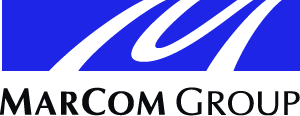by Peyton Pacella
Investing in your employees, particularly their well-being, can have long-lasting effects on morale, retention, and performance. In fact, the data is compelling enough to convince most businesses that such an investment is worthwhile, even prudent. According to the American Psychological Association, an overwhelming 92% of workers said it was important to them to work for an organization that provides support for employee mental health.1
This tells corporations, large and small, that what’s important to employees should be important to company leaders. They can address this by focusing on things like providing essential resources to assist staff with personal challenges, having education and training opportunities for continuous professional development, recognizing accomplishments and celebrating employee achievements, and encouraging a work-life balance supported by policies and procedures.
Resources – More Than What’s Expected
Life is full of unexpected twists and turns, and the demands of a job can leave little to no room for employees to deal with the challenges in their daily lives, such as dealing with the loss of a loved one, buying a new home, or working through a difficult phase in a relationship. Thankfully, companies have many resources they can use to support their employees and help them through these turbulent times.
One vital resource that stands out for me is the Employee Assistance Program (EAP), which helped us support an employee’s family during an especially difficult time. An EAP helps employees deal with mental health, illness, relationships, or family issues and offers a wide range of resources, including access to expert advisors and licensed counselors when people need them most.
Finances are another significant source of stress that affects employees’ well-being and performance. Many companies, like ours, have partnerships with outside experts to help their staff with investments, wealth management, and retirement planning. Early in my career, I worked with an employee who was a first-time home buyer. The uncertainty of the situation created so much anxiety that it affected his performance at work. Unaware of the circumstances, his supervisor placed him on a Performance Improvement Plan (PIP). After taking this step, management learned the root cause—the employee was so overwhelmed with the home-buying process that he was unable to focus on the job. After introducing him to our EAP, he worked through the financial challenges and developed a plan for their future. Ultimately, he successfully completed the PIP and was once again a valuable, contributing member of the team!
These resources enable employees to be the best version of themselves day in and day out. So, what’s the company’s return on investment? They retain talented, trained professionals. Importantly, such programs also build loyalty and trust in the company and its leadership. Employees realize it’s not all about the bottom line; it is the people who make it all possible.
Education and Training
It’s ironic. Research shows that investing in employees’ personal and professional growth builds loyalty and increases retention. Yet, many companies skimp when it comes to the staff education and training budget. Encouraging employees to continuously build on their knowledge and skills should be a top priority for any company. This includes opportunities for continued education, certifications, and training. Doing so also ensures employees remain current with industry trends and best practices.
While preparing for a recent employee training session, I came across some fascinating data2 about company training budgets. In 2023, small companies with less than 500 employees spent roughly $2,236 per employee; midsize companies, those between 500 and 9,999 employees, spent $850 per employee; and large companies with more than 10,000 employees spent only $509 per employee.
That is the exact opposite of what most people would expect, particularly when there is compelling evidence that investing in your people is one of the best things a company can do! According to Clear Company3, a talent management platform, “74% of employees say that a lack of professional development opportunities prevents them from reaching their full potential. Additionally, 94% of employees would stay longer at a company if it invested in staff development.” The takeaway? Every dollar for training and education comes back gold.
Work-life Balance
Maintaining a good work-life balance is a challenge for most people. How do you find time for the client report, your daughter’s ballet recital, and your morning run? Believe it or not, company policies and programs are a key part of the answer, including remote work and paid leave. An article in Forbes Advisor4 states that a whopping 98% of workers want to work remotely, at least part of the time. This overwhelming figure reflects the workforce’s growing affinity towards the flexibility, autonomy, and work-life balance that remote work offers.
MarCom Group uses a hybrid solution to address this challenge. While a few jobs require an employee’s physical presence a few days a week, everyone has the option to work remotely. This has enabled our company to hire talented employees from all over the world, team members that otherwise may not have been available to us if not remote.
Beyond the place of work, companies can demonstrate their commitment to a work-life balance by going beyond the standard paid leave program and allow staff to take time off when they need it most. One way to show employees you care about their well-being is by offering mental health days. This program allows them to take the time they need for self-care. Some days, people just need to take a step back, take a day off, spend time with the family, or simply reset.
Encouragingly, this is becoming more common, but there is still room for improvement. Only 15% of those surveyed reported that their employer offers company-wide mental health days. What we do know is that, too often, companies buy back vacation days. The fact that employees are not using all their paid leave is troublesome and contributes to burnout. These paid leave programs help ensure employees manage their personal and professional lives more effectively, giving companies a more focused and higher quality employee.
Employee Recognition
Speaking of quality employees, few things boost morale more than a positive and supportive work environment. There’s a direct correlation between motivating employees and recognizing their achievements. To make the point, a survey of 2,000 working Americans said that almost half of U.S. workers (46%) left a job because they felt unappreciated. Another 65% said they would work harder if they felt like their contributions were noticed by management.5 This clearly shows why it’s imperative companies find ways to recognize their employees, whether it’s with monetary spot bonuses, shoutouts in team meetings, hand-written cards, or more formal awards. I have seen employees, including new hires all the way to company executives, light up when they receive kudos for their hard work. The takeaway: acknowledgment goes a long way with each and every employee.
The Bottom Line
Companies that create a workplace that prioritizes employee well-being and satisfaction will attract and retain top talent. It’s the ones that provide more than the “usual” HR resources, emphasize (and fund) continued education and training, have supportive policies and procedures, and recognize peoples’ exemplary performance that will stand out in the industry. Is your organization doing all it can to meet the challenge?
About the Author
Peyton Pacella is the Human Resources Manager at MarCom Group, a top-ranked advertising, marketing, and events woman-owned small business. A SHRM-certified professional, he oversees the company’s entire human resources program, encompassing more than 60 employees worldwide. During his career, he has seen firsthand the life-changing impact effective HR programs can have, and is committed to ensuring employees are provided the resources and support they need to succeed in the workplace. In his free time, Peyton enjoys the outdoors and proudly coaches varsity baseball at a high school in Northern Virginia.
References:
1American Psychological Association (https://www.apa.org/pubs/reports/work-in-america/2023-workplace-health-well-being)
2SHRM Course Material
3Clear Company (https://blog.clearcompany.com/27-surprising-employee-development-statistics-you-dont-know)
4Forbes (https://www.forbes.com/advisor/business/remote-work-statistics)
5Bonusly (https://bonusly.com/post/employee-appreciation-survey)

